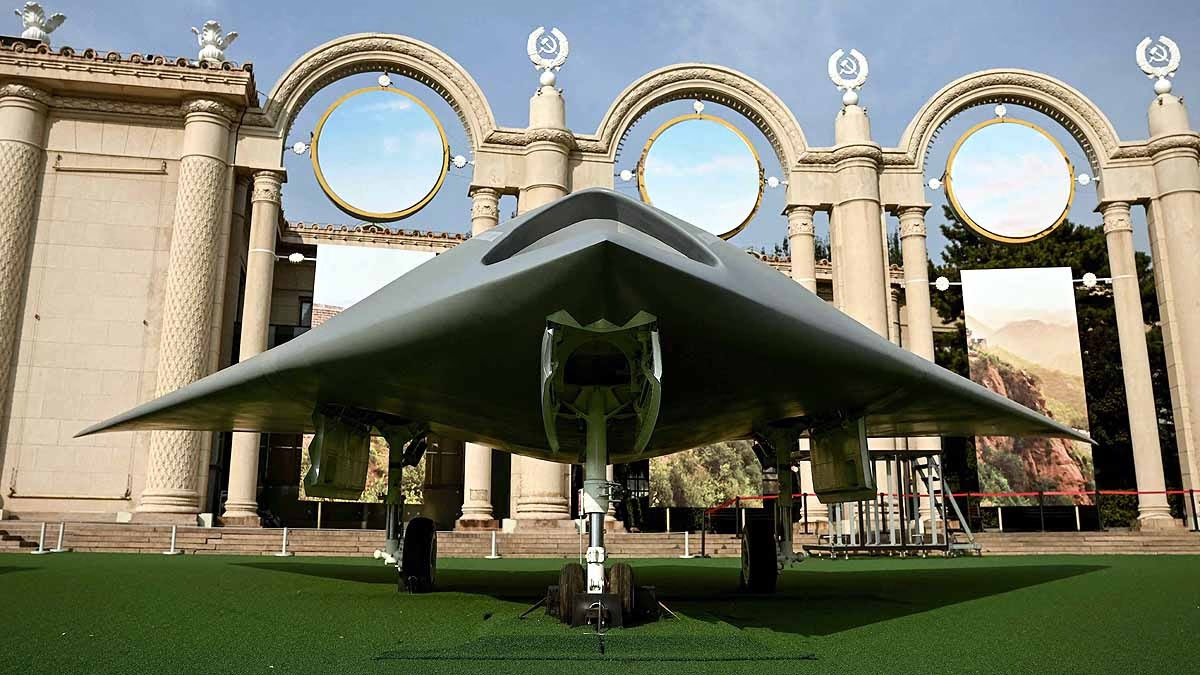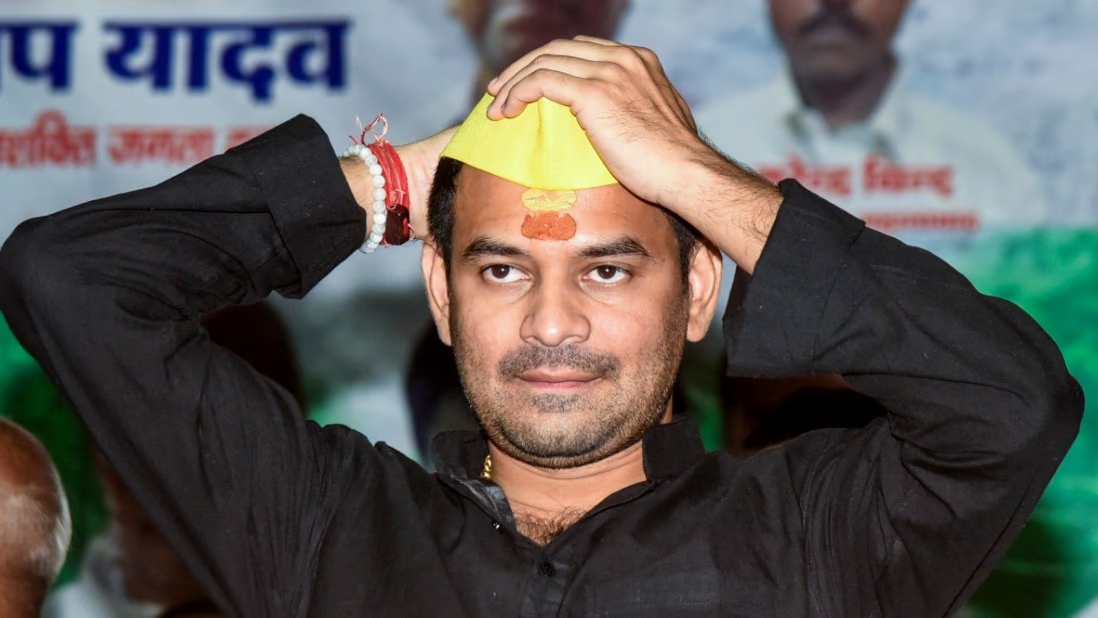If the Grand Alliance aims to triumph in the Bihar Assembly elections, breaking NDA's stronghold in North Bihar is vital. The last election results hint at this necessity. Here, vote sharing could be the key to the Grand Alliance's success. Let's explore how!
It's noteworthy that Bihar is administratively divided into nine zones. For electoral analysis, ten zones are formed by separating Patna from Bhojpur—five in North Bihar and five in South Bihar. North Bihar has a total of 140 seats: Saran (24), Tirhut (49), Darbhanga (30), Kosi (13), and Purnia (24). South Bihar has 103 seats with significant influence from Bhagalpur (12), Munger (22), Magadh (26), Patna (21), and Bhojpur (22).
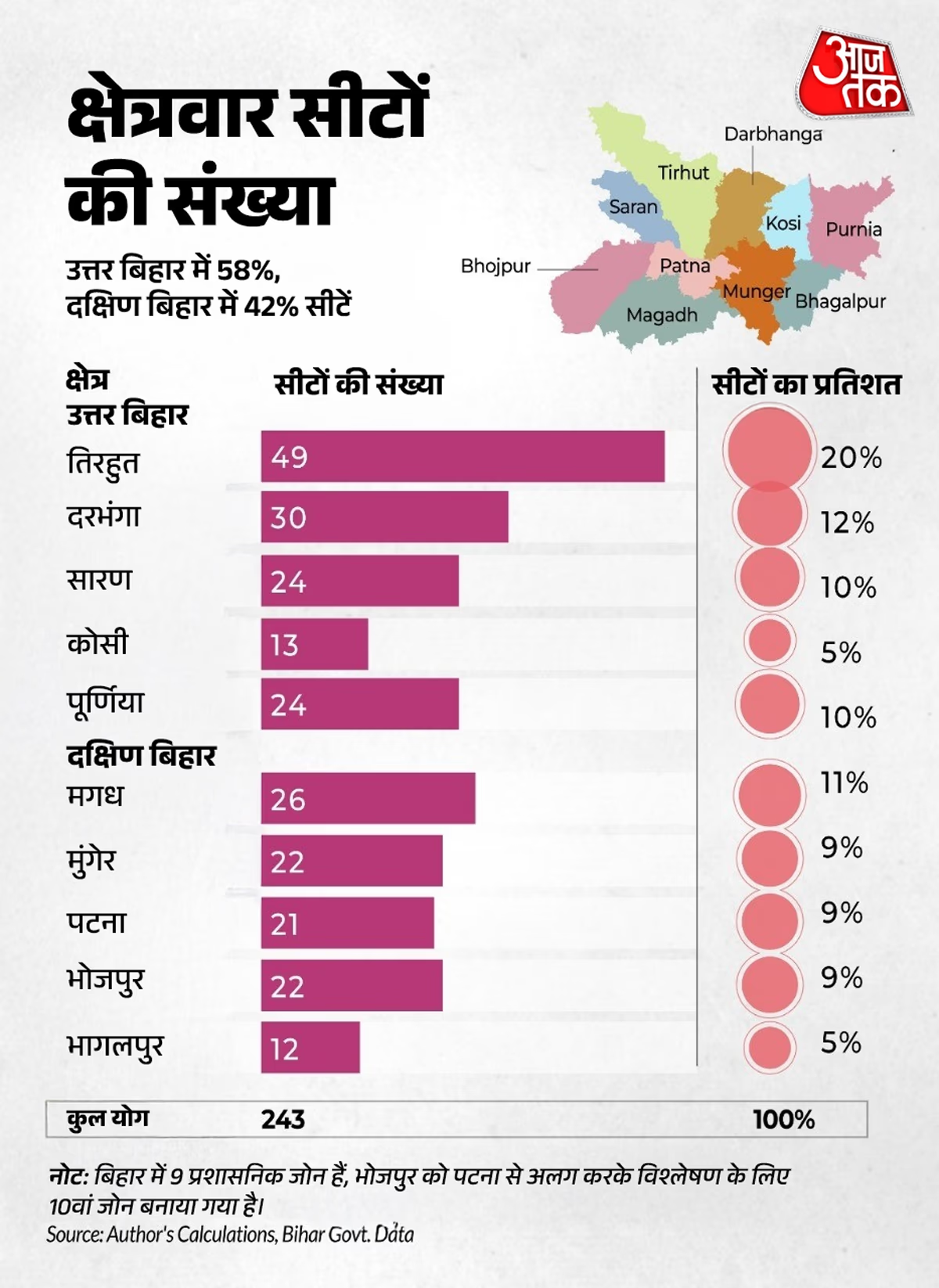
Source: aajtak
Seats in North Bihar constitute about 58% of the total seats. Nearly 70% of the state's Muslim population resides here, with about 46% living in Purnia alone. In Tirhut and Darbhanga, the Muslim population is approximately 18% close to Bihar's average. Hence, North Bihar becomes the focal point of electoral polarization. Tirhut and Darbhanga have higher Upper Caste populations (around 11%), whereas the Kosi region has the highest Yadav population (22%).
The Dalit population is nearly equal in both North and South Bihar, with Magadh hosting the largest Dalit population (31%). In Patna and Bhojpur, it hovers around 21-22%. North Kosi stands out with the highest Dalit concentration (21%).
In South Bihar's Patna, Magadh, and Bhojpur, Yadavs are prominent. The region also boasts a significant share of Upper Castes and Kurmi-Koeri voters. Saran, Munger, and Darbhanga have the highest numbers of Extremely Backward Castes (EBC). These demographics play a pivotal role in ticket distribution.
The 2020 Election
In 2020, the NDA won 125 out of 243 seats, while the Grand Alliance secured 110. The vote difference was a mere 12,000. NDA led in five zones, the Grand Alliance in three, while two zones saw a close competition. The NDA enjoyed a significant lead in Kosi (+7%), whereas the Grand Alliance thrived in Bhojpur (+12%).
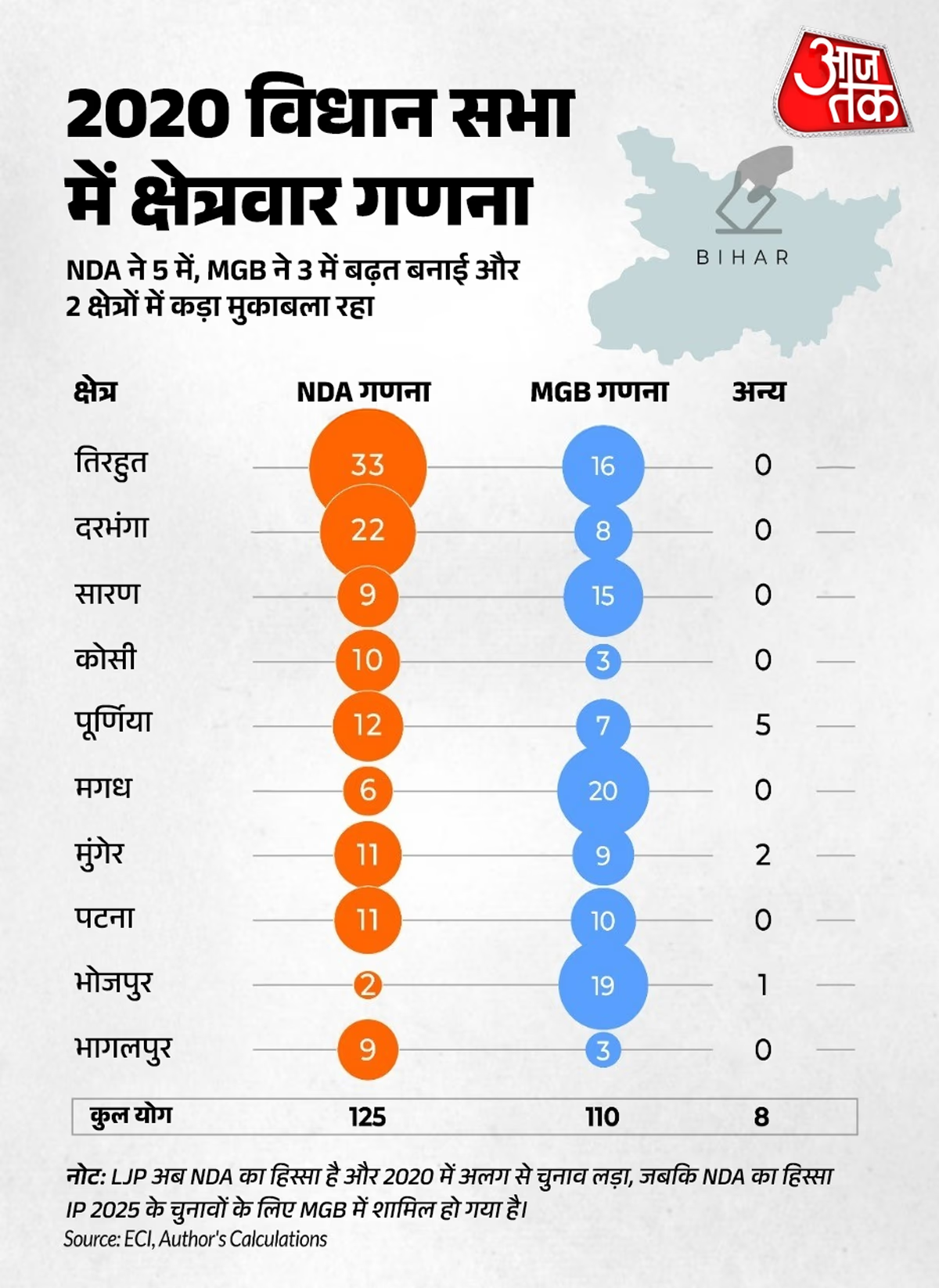
Source: aajtak
In North Bihar, the NDA claimed 86 out of 140 seats. It led in every zone except Saran, even in Muslim-dominant Purnia. Here, AIMIM's Owaisi took around 11% votes, benefiting the NDA.
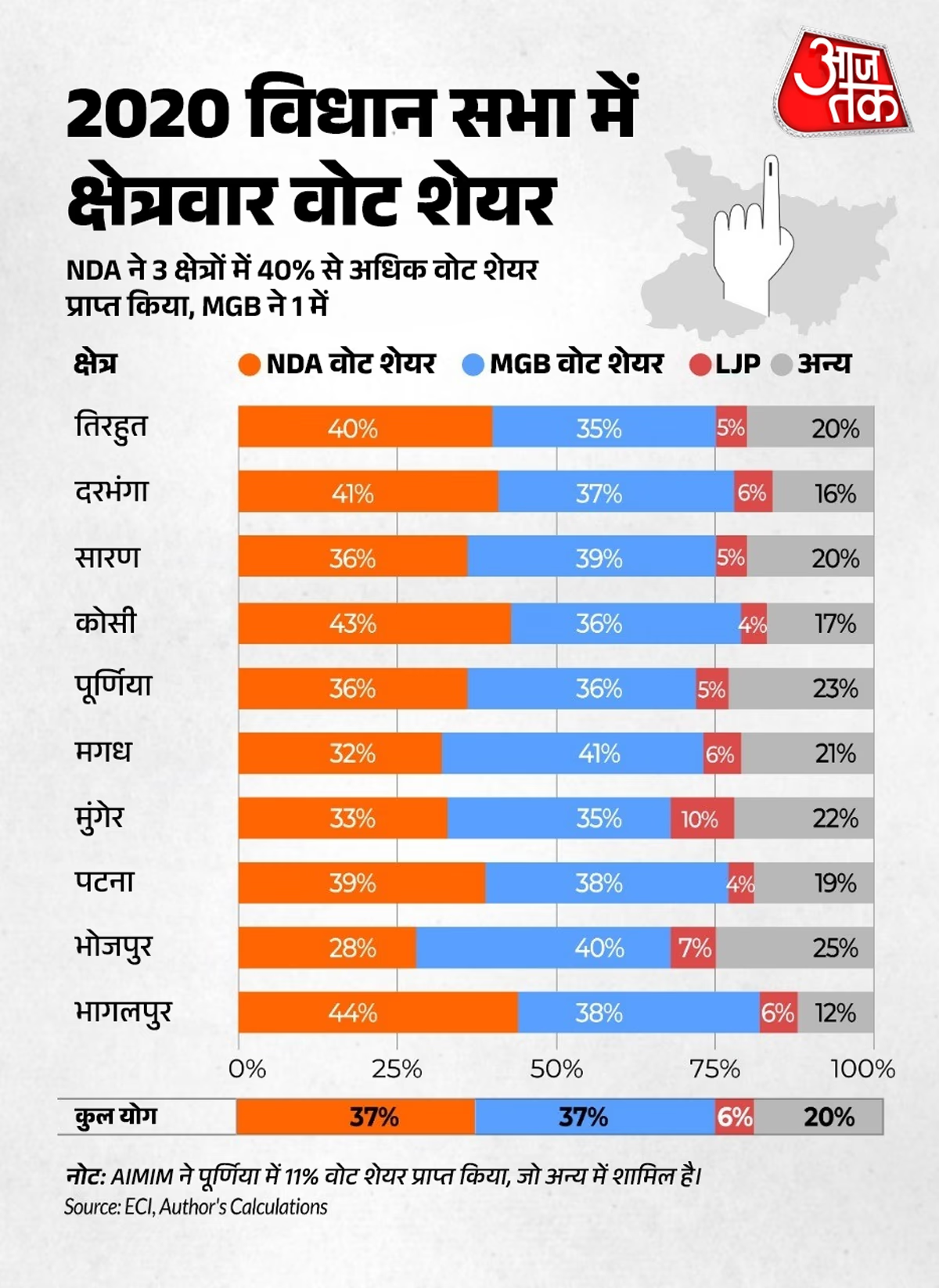
Source: aajtak
Conversely, the Grand Alliance won 61 out of 103 seats in South Bihar. It led in two zones (Bhojpur and Magadh), while NDA led in Bhagalpur, and competition in Patna and Munger was neck-and-neck.
Despite a larger Muslim population in North Bihar, polarization weakened the Grand Alliance. According to political analysts, the contest morphed into Hindu versus Muslim. In South Bihar, with fewer Muslims, caste equations wield more influence, thereby benefiting the Grand Alliance. As a result, JDU failed to claim any seats in Bhojpur and Magadh.
NDA's 2024 Comeback
In the 2024 Lok Sabha elections, NDA extended its lead. Their Assembly margin of 125-110 expanded to 173-67 in Lok Sabha. NDA led in seven zones, the Grand Alliance in three. In North Bihar, NDA secured 116 out of 140 seats, 30 more than in 2020. They overtook Saran from the Grand Alliance, while Purnia was won by the Grand Alliance after Congress aligned with Pappu Yadav. In South Bihar, NDA led (57-46). The Grand Alliance dominated Bhojpur and Magadh, while NDA claimed Munger and Patna.
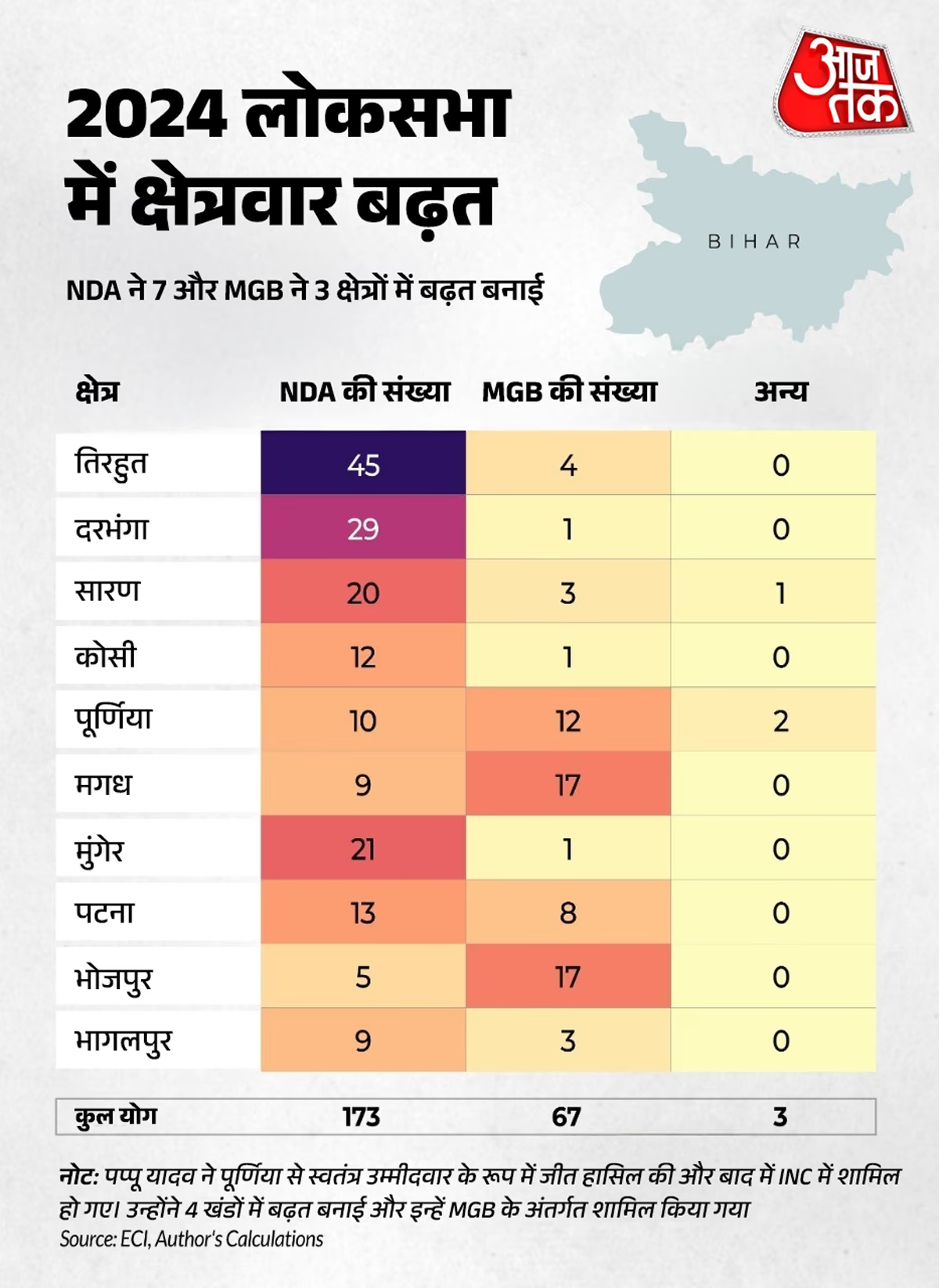
Source: aajtak
What strategy should the Grand Alliance adopt now?
Defeating NDA without winning in North Bihar, particularly in Tirhut and Darbhanga, is challenging. Together, these zones account for one-third of the state's seats. Tirhut has traditionally been a BJP stronghold. BJP has 69 resilient seats, consistently winning over recent elections, with almost half (32) concentrated in these two zones.
Nearly 71% of such seats are in North Bihar. JDU boasts 73 strong seats, with 55% located in North Bihar. For the Grand Alliance, the challenge is to pivot from polarization to focus on employment, corruption, and development issues.
But how could this be achieved?
Some suggest reducing tickets for Muslim candidates to minimize polarization, but the community is already discontented with under-representation. Conversely, deploying more Muslim candidates in South Bihar might heighten polarization and undermine caste advantages.
According to VoteVibe surveys, voter theft is a significant issue among Muslim and Yadav voters, at 33% and 20%, respectively. This sway could favor the Grand Alliance, yet simultaneously encourage other caste groups to rally behind NDA. Reports indicate maximum voter deletion incidents, including name drops, in Gopalganj, Kishanganj, and Purnia, two of which belong to the Seemanchal area.
In the past two months, the Grand Alliance has heavily focused on SIR (Social Justice, Justice, and Employment). Yet, the contest slid back to religious lines instead of development issues. As the saying goes, every action has an equal and opposite reaction.



